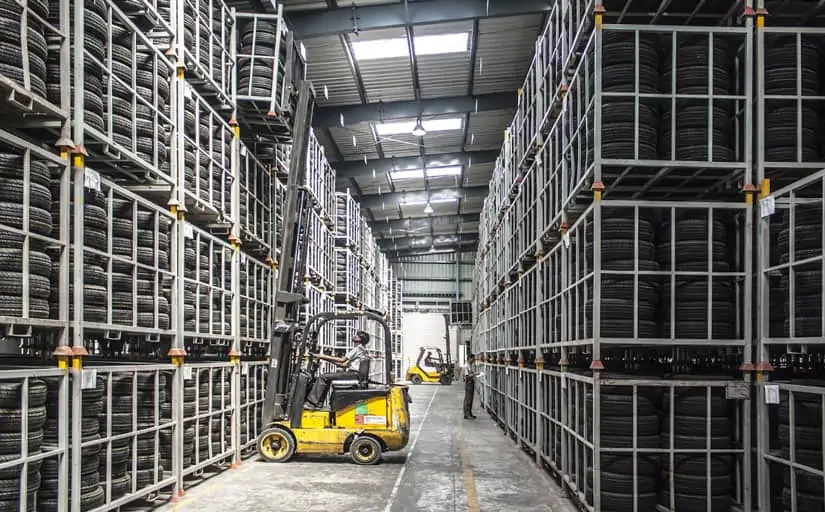
In the best of times, your inventory can be a profitable asset, and in the worst of times, a costly liability. Depending on the situation, too much or too little inventory can hamper your profitability.
This is why the type of inventory management your business uses is important.
Misalignment between your inventory management methods and your customer’s buying cycle, for example, can result in shipment delays.
Alternatively, an overly optimistic market forecast can result in you overspending on inventory. As a result, you will be on the hook for surplus storage costs.
We compiled this list to help you identify the method that suits your business’s time-to-market and revenue needs.
More Business Process Insights for Lowering Costs:
- How to Find (and Eradicate) Bottlenecks in Manufacturing
- 12 Disastrous Operational Issues That Will Cost Your Business Millions
- Value Stream Mapping Examples for Different Industries
Proven Types of Inventory Management
1. Just-in-Time (JIT) Inventory Management
With JIT, you are only ordering inventory on an as-needed basis.
Be it as a manufacturer or a retailer, you are buying only the amount of inventory you need for your production or sales needs in the near-term.
The benefit of JIT is that you are lessening your risk of overspending on unnecessary or surplus inventory both upfront and long-term. The effect of this is that you can increase your net-revenue by avoiding the costs of unmoved products/materials.
JIT has its risks as well, but that risk flares as a result of inaccurate forecasting rather than the methodology itself. If you fail to forecast your sales needs, you could end up with an inventory shortage, which will limit your profit potential.
2. Just-in-Case (JIC) Inventory Management
JIC takes the opposite approach to JIT.With JIC, you are intentionally maintaining a surplus inventory with the aim of lowering the risk of shortages. In light of JIT, JIC might appear to be a non-optimal approach, but for certain businesses, it is actually prudent.
For example, if your manufacturing plant is located in a region with poor weather, traffic, and other factors that can delay your raw material work orders, you will fall short of your revenue goals.
Likewise, some products could have very high, built-up demand where otherwise healthy stocks could deplete rapidly (e.g., the Nintendo Switch).
3. ABC Analysis
The objective behind ABC Analysis is to have inventory managers categorize their items in terms of value. The most important/valuable is “A” and “C” is the least.ABC Analysis draws upon the 80/20 rule wherein 80% of your overall value comes from 20% of your items. Thus, items in A will account for the least in terms of quantity, but the most in terms of revenue value.The rationale for using ABC Analysis is to ensure that items in category A are never out of stock. As a result, you might use the JIC method of stocking surplus inventory.
See How MOSIMTEC’s Simulation & Modeling
Increased Mining Output by $150 Million
Alternately, you can insert items in category C under JIT. Even if your forecasting is off, the risk of not having enough isn’t significant. This is because items in category C are the least valuable — a lost sale will not harm your net-revenue.
It should be noted that you are likely to use ABC Analysis in combination with another type of inventory management, such as JIC and JIT, among others.
4. Cross-Docking
Cross-Docking primarily occurs at the logistics and transport level.You are taking materials or supplies from one truck and directly placing it in another. The idea is to minimize the amount of inventory sitting in a warehouse.Walmart started deploying Cross-Docking to its supply chain management system in the 1980s. Walmart benefitted from the switch by lowering its warehousing costs.However, Cross-Docking may not optimally work if you lack the end-to-end infrastructure of Walmart and other giants. In Walmart’s case, the inventory moved from the supplier to Walmart’s stores — there was end-to-end coverage.
If you lack this infrastructure, outside partners may now be willing to absorb your inventory storage costs.
5. Dropshipping
This method eliminates inventory entirely. It works by enabling you to fulfill customer purchases by forwarding the order to the manufacturer or supplier directly.This approach is common among retailers, especially in the e-commerce space.
However, dropshipping will not fulfill the needs of manufacturers that require a raw material inventory to actually produce the good. In other words, this method is not suitable for every kind of business.
You should also be mindful of the cost.
You should not stop managing inventory for its own sake, but to increase your margins. Pay attention to your margins when dropshipping.
You may notice that a critical aspect of selecting the right type of inventory management system and properly implementing it rests on accurate forecasting and expert business insight. One way to leverage both is through simulation and modeling.
For nearly a decade MOSIMTEC has been supporting the top Fortune 500 companies cut their costs and boost profit through simulation and modeling. Contact us today to bring yourself one big step close to your industry’s top competitors.